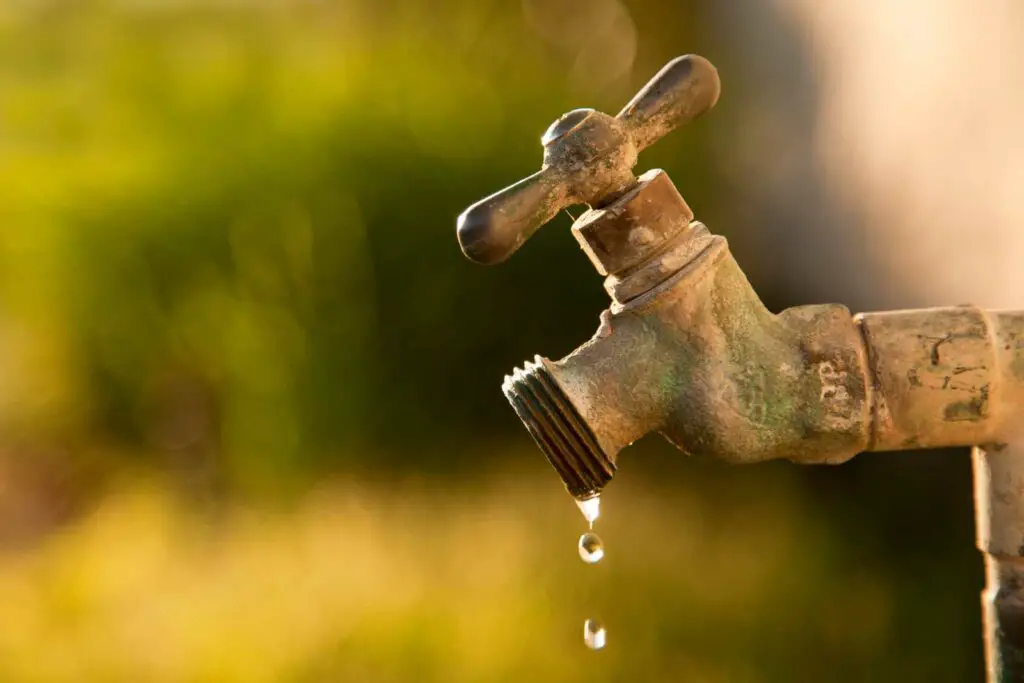Have you ever wondered about the difference between a standard hose bib and a frost-free faucet or which type is the best for your outdoor setup?
Spoiler alert: there are several types of outdoor water spigots, each tailored for unique scenarios and environmental conditions. And making the right choice can take your outdoor project to the next level.
But wait! There’s more to think about:
What’s the best type of outdoor faucet for cold climates?
Is upgrading your existing outdoor faucet a must?
Can an outdoor faucet be as good as your indoor kitchen faucet?
How are shut-off valves and anti-siphon valves changing the outdoor faucet game?
Don’t worry, all these burning questions will be answered. Get ready. We’re about to embark on an exploratory journey into the world of outdoor water spigots.
- Outdoor water spigots are available in several different types including standard hose bibs, frost-free faucets, sill cocks, and spigot faucets, and more, each offering different functionalities and features.
- Understanding local plumbing codes is crucial when installing outdoor faucets, particularly regarding anti-siphon valves and shut-off valves.
- Depending on the specific needs, one may opt for a hose bibb for yard work, an outdoor tap for easy water access, or a faucet with oversized handles for convenience.
- Outdoor kitchen faucets and swimming pool faucets are specialized types of outdoor faucets catering to particular requirements.
- Frost-free faucets are a popular upgrade choice for existing outdoor faucets, especially in areas with cold winters.
- The functionality and design of outdoor faucets have evolved, with modern faucets offering a range of features for better user experience.
- Material choice plays a significant role in the durability of outdoor faucets, with brass, stainless steel, and bronze being popular choices for their longevity.
Heads up! Before we get too far along here, if you want to connect with other homeowners, DIYers, and builders and get more great ideas for your home to make your space the best join my free private Facebook group, Remodel Reality here.
Types of Outdoor Faucets & Spigots
You may not realize it, but there’s actually quite a variety of outdoor faucet types available. And guess what? Each type serves different purposes with its unique features. So let’s dive right in and explore some of the most common outdoor faucets you might encounter.
Ball Valve Faucets
Ball valve faucets are known for their durability and ease of use. They have a simple lever that controls water flow and are usually made of brass or stainless steel. These faucets are great because they rarely drip, giving you a reliable water source in your yard or garden.
Hose Bib Faucets
Hose bib faucets (also known as hose bibbs or hose bibs) are a classic go-to choice for outdoor faucets. They’re designed to work well with garden hoses, making them perfect for watering plants or washing cars. Fun fact: These faucets come in two types – standard and frost-free. Frost-free models are designed to prevent freezing and potential pipe damage in colder climates. No more icy surprises!
Outdoor Spigots
Outdoor spigots are a common sight in many yards, providing an accessible water source for a variety of tasks. You might think of them as the standard or “generic” outdoor faucets. They’re what most people imagine when they think of an outdoor faucet, but even these come in various shapes and sizes.
Yard Hydrants
Have you ever seen those tall, freestanding outdoor faucets in farms or large properties? Those are called yard hydrants. They’re made to provide water flow control in more remote locations – perfect for irrigation or filling up a bucket without needing to run a hose all the way from the house.
Frost-Proof Faucets
Cold temperatures can be a faucet’s worst enemy. Frost-proof faucets (like some hose bib faucets) are designed to prevent freezing by shutting off the water flow within the insulated section of the faucet. This feature ensures the water in outdoor pipes doesn’t freeze during cold months. And trust me, this is a lifesaver in my experience!
Anti-Siphon Faucets
Anti-siphon faucets are designed to prevent water from siphoning back into the main water supply – a feature required in some areas to protect against contamination. These faucets have a built-in vacuum breaker that stops water from being siphoned backward, ensuring your water stays clean and safe.
Wall Hydrants
Wall hydrants are similar to hose bib faucets, but they’re designed to be mounted against a wall or structure. These faucets, like the frost-proof options, can provide a reliable water source in colder climates without worry. So go ahead, get that outdoor sink set up without fear of frozen pipes!
Garden Hose Faucets
As the name suggests, garden hose faucets are specifically designed for connecting to your favorite garden hoses. They have a threaded spout to create a secure connection between the faucet and the hose. Plus, some models come with a built-in hose reel, making it easy to store your hose when not in use.
Compression Valve Faucets
Compression valve faucets work by using a rubber washer (instead of a ball valve) to control water flow. While these faucets are more susceptible to dripping and wear, they’re still a dependable option for outdoor water access.
Frost-Free Spigots
We’ve touched on frost-free options earlier, but let’s emphasize their importance. Frost-free spigots are designed to prevent freezing and potential damage to your outdoor plumbing. Installing these can save you a lot of hassle when the temperature drops (and potentially save you from costly repairs!).
Sillcocks
Sillcocks are outdoor faucets that are mounted on the exterior wall of a building and typically feature a long spout. They can be either frost-proof or non-frost-proof, depending on your needs and the climate where you live.
Outdoor Shower Faucets
Planning an outdoor shower? Then outdoor shower faucets are what you need. Designed specifically for shower setups, they typically feature hot and cold water controls, a showerhead attachment, and sometimes even a hand-held sprayer to help you feel refreshed after a swim in the pool or a day in the garden.
Outdoor Sink Faucets
Outdoor sink faucets are, well, exactly what they sound like – faucets designed for outdoor sinks. These faucets can have a variety of styles and features, from pull-out sprayers to wall-mounted options. It all depends on what best suits your outdoor kitchen or washing station.
Outdoor Faucets for Sprinkler Systems
If you’ve got a sprinkler system or planning to install one, you’ll need an outdoor faucet designed to handle the water pressure and requirements of your system. These faucets typically have threaded connections and can be used with common garden hoses or dedicated pipes for your sprinklers.
Outdoor Faucets with Backflow Preventers
The last kind of outdoor spigot we’re going to talk about is those outdoor faucets with backflow preventers. These safety devices are designed to keep potentially contaminated water from entering your home’s main water supply. Installing a faucet with a backflow preventer can keep your family safe and give you peace of mind, knowing that your water source is protected.
Whether you’re washing your car, creating an outdoor oasis, or simply keeping your garden hydrated – you’ve got options. Happy watering!
Factors to Consider When Choosing an Outdoor Faucet
You’re about to install an outdoor faucet and want to make sure you get the best one for your needs. But don’t worry, I’ve got your back! In this section, we’ll go over the top factors to consider when selecting an outdoor spigot, so you can find the perfect fit for your home. Let’s dive in.
The Nature of Outdoor Use
First things first: think about how you plan to use your outdoor faucet. Is it just for general maintenance, like watering plants or washing your car? Or do you need it for more intensive purposes, like filling a pool or running power-cleaning equipment? Different faucets have different flow rates, which directly impacts how much water they deliver. Make sure to choose a faucet with the appropriate flow rate for your intended use.
The Impact of Water Pressure and Flow
Water pressure and flow might not seem like a big deal at first glance, but they can make all the difference in how well your outdoor faucet works. If your water supply has low pressure, you’ll want a faucet designed to handle low pressure, while high-pressure systems need faucets that can withstand the force. Keep in mind that some faucets have built-in pressure regulators, which can help maintain consistent water flow even with varying supply conditions.
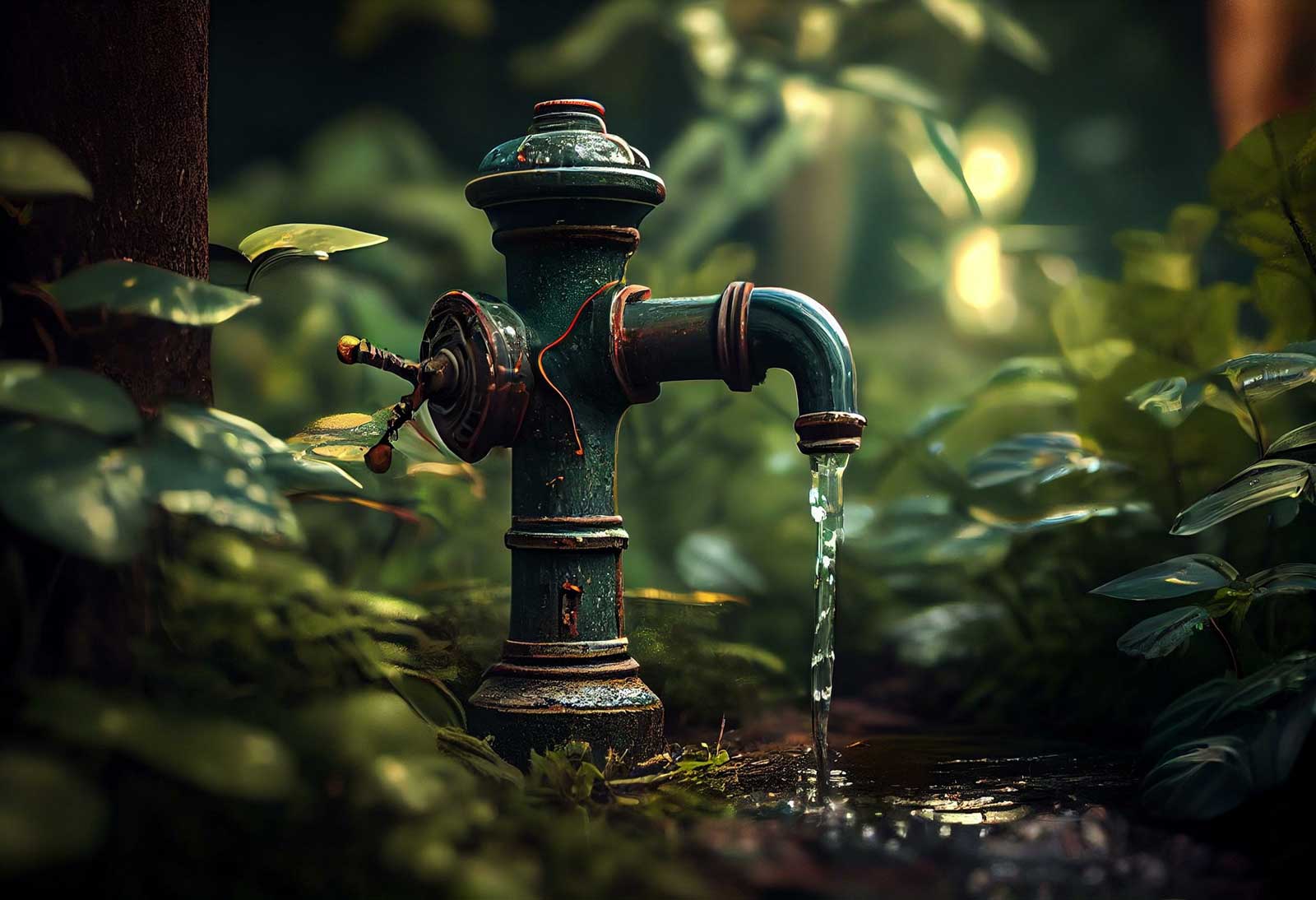
The Relevance of Your Water Source
Do you get your water from a well or a municipal system? This can impact what type of outdoor faucet you need. Some faucets are designed specifically to handle well water, which may have more sediment than treated water from a municipal supply. Others are designed for water treated with chlorine, fluorine, or other chemicals. Consider the nature of your water supply when choosing your faucet to ensure compatibility and long-term reliability.
The Effects of Different Weather Conditions
We all know the saying: “there’s no such thing as bad weather, only unsuitable clothing.” Well, the same principle applies to faucets! Depending on where you live, your outdoor faucet may be exposed to freezing temperatures, high winds, heavy rain, or blazing sun. To protect your plumbing and ensure reliable operation, choose a faucet designed to withstand the specific weather conditions in your area. For example, if you live in a region with freezing winters, a frost-proof outdoor faucet is a must-have to prevent freezing and potential damage.
The Differences Between Hot and Cold Water Faucets
You might not think there’s a huge difference between hot and cold water faucets, but trust me, there is! While most outdoor faucets are designed for cold water use only, some models are made to deliver hot water as well. If you need an outdoor faucet that can provide both hot and cold water, make sure to select a model specifically designed for this purpose. This usually includes separate valves for controlling the temperature, ensuring you have the perfect water temperature for any task.
In my experience, taking the time to carefully consider these factors when choosing an outdoor faucet can save you time, money, and headaches down the road. So before you dive headfirst into your next outdoor plumbing project, make sure to weigh your options and pick the faucet that best suits your needs.
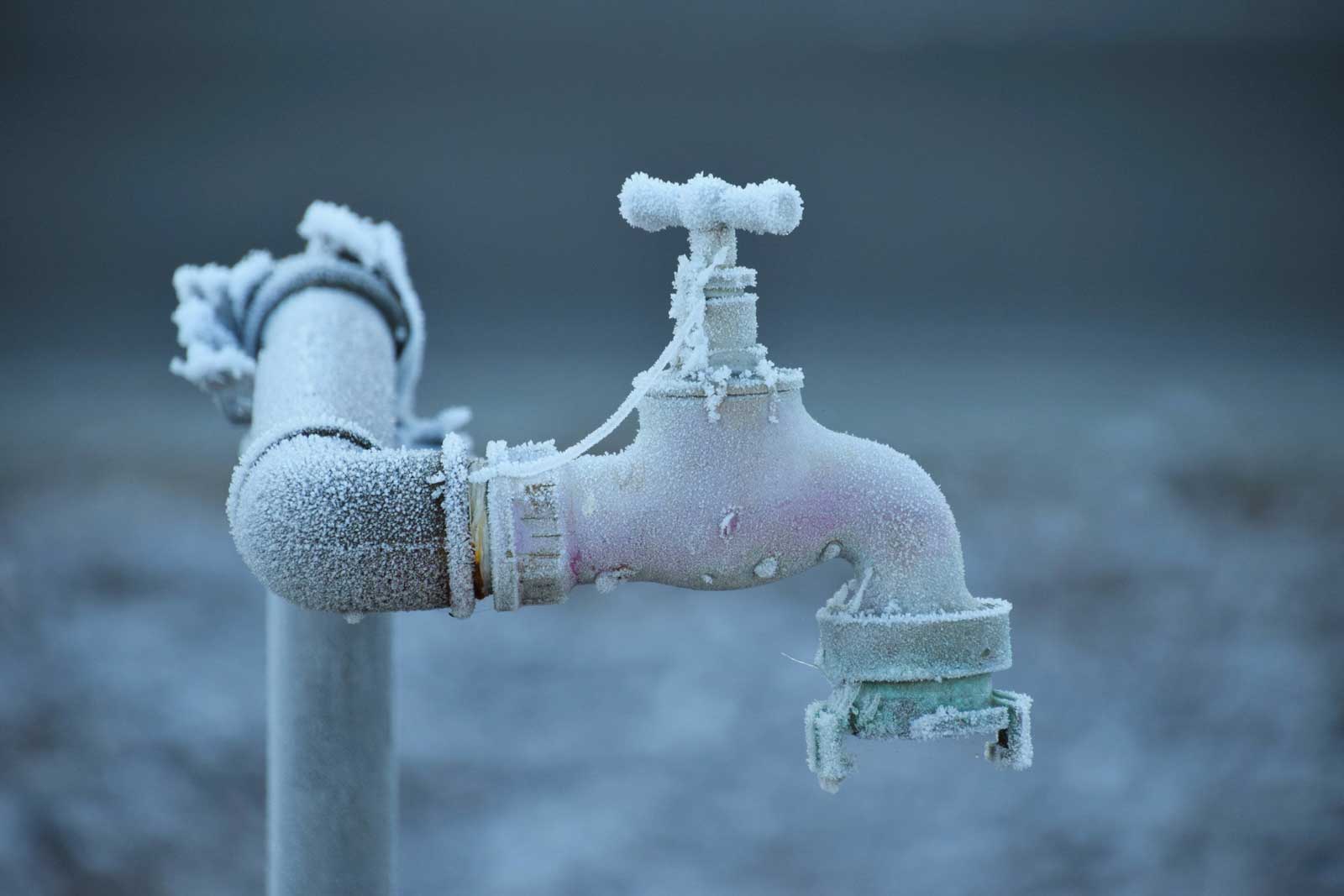
Plumbing the Depths: Choosing Outdoor Faucets for All Climates
You wake up one freezing morning, go out to wash your car, and boom! Your hose bibb has frozen solid. You realize you’ve made a crucial mistake: not selecting the right outdoor faucet for your region’s climate conditions. So, what can you do now? Let’s dig deeper into this chilly topic.
1. Understanding Your Frost Line: Your First Line of Defense
Imagine this: you’re cozy indoors, heating cranked up, while outside, it’s colder than a polar bear’s toenails. Suddenly, the flow of water in your outdoor tap trickles to a stop. Why? The frost line happened, that’s why.
The frost line, in layman’s terms, is the maximum depth where the ground freezes during the coldest times of the year. If your water line is above this frost line, you can bid adieu to a steady water supply during those cold winter months. That’s because when water freezes, it expands, which could cause your water pipes to burst. (And you thought the Ice Age was tough!)
So, here’s the golden rule of thumb: The depth of your water supply line should always be below your area’s frost line.
2. The Cold Warriors: Frost-free Faucets and Frost-proof Hose Bibs
The good news is, frost doesn’t have to mean catastrophe for your outdoor water fixtures. Enter frost-free faucets and frost-proof hose bibs, the superheroes of cold climate plumbing.
These clever pieces of hardware have a long stem that extends into the house. The shut-off valve is located at the end of this stem, inside your home where it’s warm and cozy. When you turn off the water, any remaining liquid in the pipe drains out, preventing freezing. So, even when Jack Frost is knocking at your door, these faucets keep your water flow steady and your pipes safe.
3. The Old and the Rural: Why Frost-free is a Must
In my experience, older homes and rural areas tend to have traditional faucets. But while nostalgia can be charming, when it comes to your outdoor kitchen faucets or hose bibb, you might want to trade tradition for innovation.
Older homes often have standard hose bibs that are highly vulnerable to freezing. Similarly, in rural areas where the frost line can be particularly deep, a standard outdoor faucet may not cut it. Installing a frost-free faucet or frost-proof hose bib in these instances can be a game-changer, ensuring a convenient water supply for all your yard work, even in the dead of winter.
4. The Sudden Chill: Be Ready for the Unexpected
We all know how unpredictable Mother Nature can be. One moment it’s sunny, the next moment, it’s a winter wonderland. Sudden temperature drops can be particularly treacherous for your outdoor fixtures.
Remember, it doesn’t have to be freezing for your water to freeze. Water can begin to freeze at temperatures well above the freezing point if conditions are just right. That’s why, regardless of your climate, a freeze-proof faucet is always a great option.
5. Knowledge is Power: Understanding Different Types of Outdoor Faucets
In the end, it all comes down to knowing your options. From spigot faucets to sill cock, from compression valve faucet to anti-siphon valve, the choices are numerous. But remember, each type of faucet has its benefits and drawbacks. Some offer easy access and oversized handles, while others provide better protection against dirty water.
Your mission is to choose the right faucets for your unique needs. Whether you’re filling up your swimming pool, watering your garden, or cleaning your outdoor kitchen, there’s an outdoor faucet designed to brave the elements with you. So, explore your options, ask the right questions, and make the choice that ensures your outdoor water needs are met, no matter what the weather throws at you.
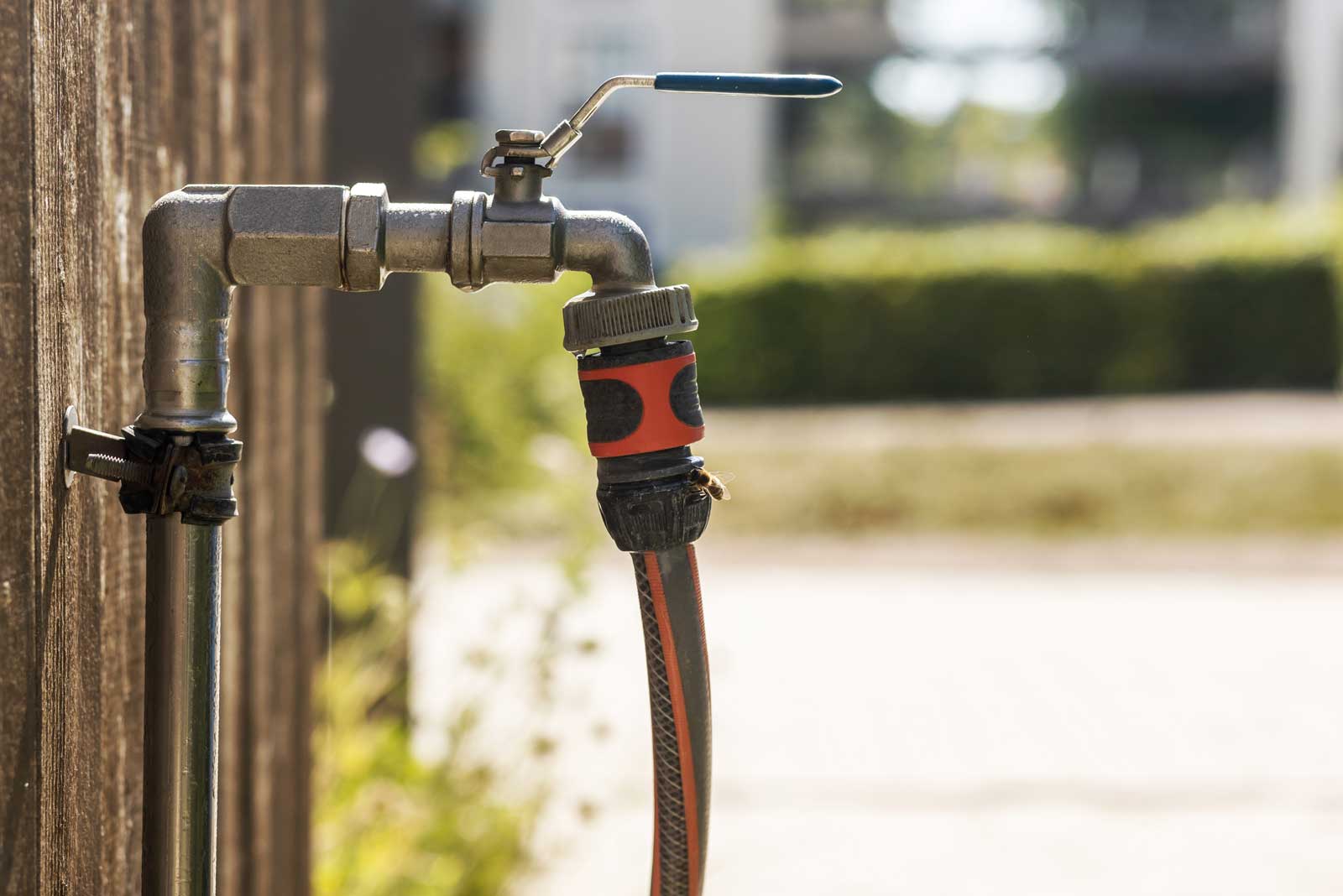
Outdoor Faucets for Specific Needs
If faucets were superheroes, the outdoor faucet would be the adaptable, ever-ready one, always there to take care of a myriad of chores and tasks around your home. Like any versatile superhero, your outdoor faucet needs to be chosen with care, tailored to your specific needs, whether that’s for yard work, easy access to water, or those awesome summer pool parties. Let’s dive into the world of outdoor faucets made for your specific needs, and trust me, this isn’t a one-size-fits-all situation.
1. The Green Thumb’s Best Friend: Hose Bibb for Yard Work
Your garden is your pride and joy. You’ve named every tomato plant, and you’re pretty sure that rose bush waved at you yesterday. You need an outdoor faucet that’s up to the task of keeping your garden green. Enter the humble hose bibb.
Designed for easy access and the simple attachment of a garden hose, a hose bibb is a great option for your yard work. Opt for a frost-proof hose bibb to ensure your green friends get water even in the cold winters.
2. Quick Sips and Dog Dips: The Outdoor Tap
When you or your four-legged friends are parched after a fun-filled day in the sun, you don’t want to traipse through the house for a drink. Here’s where an outdoor tap comes in handy. It offers easy access to a convenient water supply, right when and where you need it.
Even better? Go for a type of faucet with oversized handles for maximum convenience. Turning on the water supply has never been easier, even when your hands are full with frisbees and dog treats.
3. The Gourmet’s Oasis: Faucets for Outdoor Kitchens
Let’s talk about outdoor kitchens. They’re the hot ticket item for anyone who loves to cook in the great outdoors. But you need the right outdoor kitchen faucet to make your culinary adventures a success.
In my experience, you want a faucet that can handle everything from washing veggies to filling up pots. Look for something sturdy, with a good flow of water, and perhaps even a hose attachment for flexibility. Remember, the best outdoor faucet for a kitchen is the one that makes your outdoor cooking a breeze.
4. Poolside Paradise: Faucets for Your Swimming Pool
Speaking of breeze, nothing beats a refreshing dip in your swimming pool on a hot summer’s day. But filling up that pool? That’s a whole different story.
You need a faucet that can deliver a high water flow, ideally with a hose attachment for easy reach. And don’t forget about maintenance. An outdoor tap with a shut-off valve is a must to control the water supply when it’s time for cleaning or winterization.
As you can see, picking the right faucets for your outdoor needs isn’t about finding the most expensive or feature-packed model. It’s about understanding your needs and choosing a faucet that fits them perfectly. So take a moment to think about what you need your outdoor faucet to do, and make your choice with confidence. The perfect outdoor faucet for you is out there, ready to be your backyard’s unsung hero.
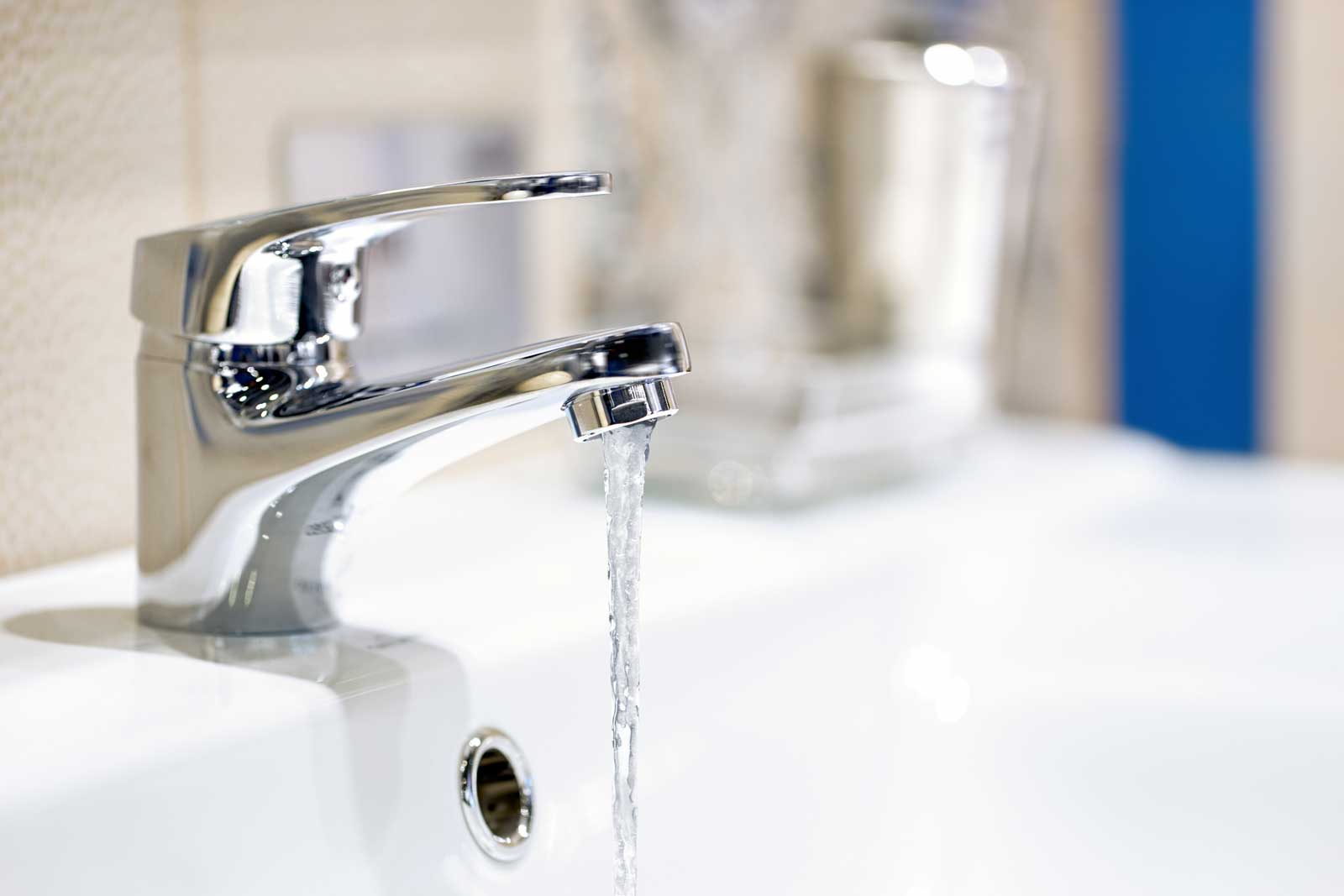
Faucet Face-off: Comparing Outdoor and Indoor Faucets
Ever think about how your outdoor kitchen faucet and your indoor kitchen faucet are a bit like apples and oranges? Sure, they’re both faucets (fruits, if you’re still following my analogy), but they are quite different in terms of functionality, design, and usage. In this section, we’ll explore the main differences between indoor and outdoor faucets and help you understand why it matters.
1. Valve Vocabulary: Understanding Types of Valves
One of the key differences between indoor and outdoor faucets lies in the type of valve they use. Most indoor faucets, such as your indoor kitchen faucet, use a compression valve. This type of valve allows you to control the flow of water more precisely. (Think of that slight turn to get the temperature just right in the shower.)
Outdoor faucets, on the other hand, typically use an anti-siphon valve. This prevents dirty water from being sucked back into your clean water supply if there’s a sudden drop in water pressure (like during a fire hydrant flush). Now that’s a type of valve you can’t afford to ignore!
2. The Flow Show: How Water Moves Differently
The flow of water is another crucial difference between indoor and outdoor faucets. Indoor faucets are designed to provide a steady, controlled flow of water, perfect for tasks like washing dishes or filling up a water glass.
Outdoor faucets, like your standard hose bibs or sill cock, are built for a higher flow rate. Why? Because when you’re filling up a swimming pool or watering your garden, every second counts!
3. Installation Intricacies: Where It All Comes Together
Installing an indoor faucet can be a bit like playing a game of Jenga – it’s all about balance and precision. Indoor faucets are often more complex to install, requiring a tight connection with water supply lines and precise alignment with sink holes.
Outdoor faucets, however, are typically mounted directly to your home’s exterior and connected to an existing outdoor water line. They’re less about precision and more about durability and ease of use (think oversized handles and easy access).
4. Maintenance Matters: Keeping Things Flowing Smoothly
When it comes to maintenance, outdoor faucets usually take the cake (or in this case, the wrench). Outdoor faucets are exposed to harsh weather conditions, from freezing winters to scorching summers. They need to be hardy to stand up to the elements and require regular checks to prevent issues like freezing or leakage.
Indoor faucets, while not immune to problems, are typically more sheltered and therefore less susceptible to weather-related issues. However, they can still develop issues like leaks, drips, and low water pressure.
5. Faucet Fitness: Choosing the Right Faucet for Your Needs
In my experience, understanding these differences can guide you in choosing the right faucets for your needs. Want a faucet for your outdoor kitchen that delivers a strong flow of water? A standard outdoor faucet might be your best bet. Need a faucet for your indoor kitchen that offers precise control over water temperature? A traditional indoor faucet could be just the ticket.
Remember, it’s not just about “a faucet” – it’s about finding the kind of faucet that fits your unique needs. Whether you’re washing dishes or watering your garden, remember: choose wisely, install correctly, and maintain regularly. Because when it comes to faucets, it’s all about going with the flow!
Understanding Outdoor Faucet Materials
When it comes to outdoor water spigots, the materials they’re made of are crucial for durability and performance. Choosing the right material for your faucet can save you time, money, and a lot of frustration in the long run. In this section, we’ll explore some popular outdoor faucet materials, including their properties and advantages.
Stainless Steel
There’s a reason stainless steel is the go-to choice for many homeowners and professionals alike. Known for its strength, durability, and resistance to corrosion, stainless steel faucets can withstand the harshest conditions. In my experience, stainless steel faucets are less likely to corrode or freeze up in cold weather, making them a solid investment. However, keep in mind that they can be more expensive than other materials.
Other Materials and Their Properties
Brass
Brass is another popular choice when it comes to outdoor faucets. It’s known for its corrosion resistance and longevity. Additionally, brass faucets often have a pleasing aesthetic appeal, making them an attractive addition to your outdoor space. Remember that higher quality brass contains more copper, which makes it less likely to rust.
Iron and Cast Iron
Iron and cast iron are both durable and heavy-duty materials, providing strength and stability for outdoor water spigots. However, they are less resistant to corrosion than materials like stainless steel or brass. If you decide to go with an iron or cast iron faucet, be prepared for potential rusting and regular maintenance.
Plastic
While they may not be the most durable or long-lasting, plastic outdoor faucets are an affordable and lightweight option for those on a budget. They are less likely to corrode, but they can be susceptible to cracking due to fluctuations in temperature or rough handling.
Other Metals
- Galvanized steel: A combination of steel coated with a layer of zinc, providing moderate protection from rust and corrosion. However, it may not be as durable as stainless steel or brass.
- Die-cast aluminum: Lightweight and resistant to rust, but may not hold up as well under heavy usage or extreme weather conditions.
- Copper: Known for its natural antimicrobial properties, copper faucets can prevent the growth of germs and bacteria. While it’s visually appealing, keep in mind that copper can tarnish over time.
- Chrome and bronze: These materials are typically used as coatings or finishes, offering a touch of style and protection against corrosion.
It’s essential to understand the different materials available for outdoor faucets so you can make an informed decision based on your needs, budget, and personal preferences. By selecting the right material, you can ensure your outdoor water spigot functions efficiently and lasts for years to come.
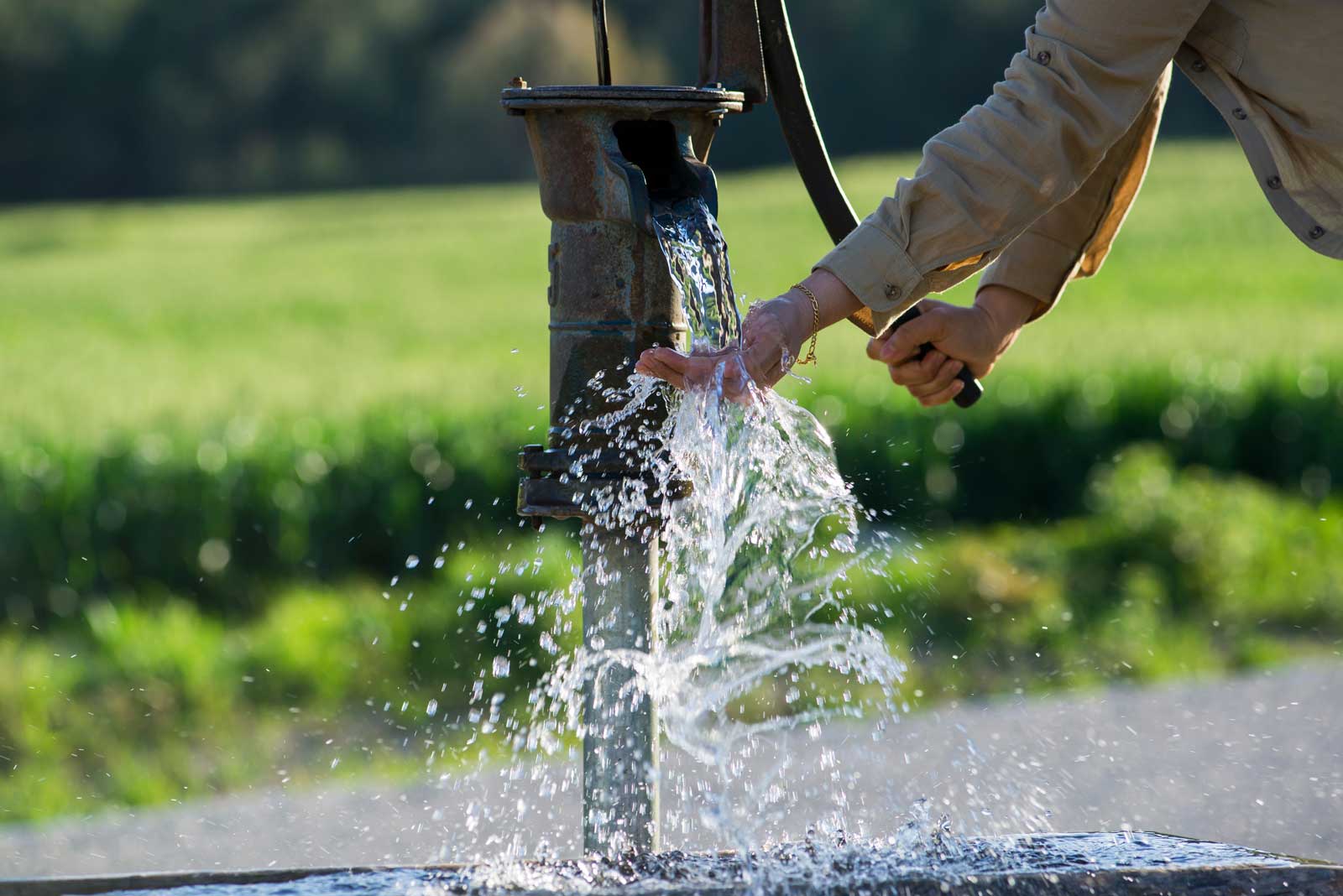
Code of Conduct: Understanding Plumbing Codes for Outdoor Faucets
Ever heard the phrase, “It’s all fun and games until someone breaks a plumbing code”? No? Just me? Alright. In any case, when it comes to installing outdoor faucets, sticking to local plumbing codes isn’t just about avoiding a fine – it’s about ensuring your water supply is safe and your faucets work efficiently. So buckle up, because we’re about to dive into the thrilling world of plumbing codes!
1. The Valve Venture: Anti-Siphon Valves and Plumbing Codes
Anti-siphon valves are a big deal in the world of outdoor faucets, and for good reason. This type of valve prevents dirty water from flowing back into your clean water supply (a nasty business, let me tell you). And because they’re so important, most local plumbing codes require them on outdoor faucets.
In my experience, the trouble often lies in understanding what an anti-siphon valve actually is. Think of it like a one-way gate: water can exit, but it can’t come back in. This means, even if there’s a sudden drop in water pressure, you won’t end up with dirty water backflowing into your home’s water supply.
2. Shut-Off Saga: The Role of Shut-Off Valves
Just as every superhero movie needs a good villain, every outdoor faucet needs a good shut-off valve. This is the control point that allows you to stop the flow of water to your outdoor tap or hose bibb when necessary, and you guessed it, they’re also a requirement under most plumbing codes.
Now, you might be thinking, “Why do I need a shut-off valve? Can’t I just turn the faucet off?” Well, shut-off valves are particularly handy when it comes to maintenance, repairs, or that pesky winter freeze. By shutting off the water supply, you can protect your outdoor fixtures from freezing and cracking.
3. Navigating the Code Complexities: Why It Matters
So why does adhering to these plumbing codes matter? First off, violating plumbing codes can lead to hefty fines. (Trust me, you’d rather spend that money on a new outdoor kitchen faucet.) But it’s not just about the potential financial hit.
Following plumbing codes ensures your faucets function efficiently, your water supply remains uncontaminated, and your outdoor fixtures last longer. Plus, when you’re aware of these codes, you can ensure your plumber isn’t cutting corners during installation (yes, even the best sometimes try to take the easy route).
4. The Importance of Professional Installation
Having said all this, installing an outdoor faucet that adheres to local plumbing codes isn’t a casual DIY project. It involves understanding water lines, valves, and a host of other plumbing essentials.
While there’s no harm in understanding the process (knowledge is power, right?), when it comes to the actual installation, it’s best to leave it to the professionals. They have the training, experience, and tools to install outdoor faucets that are up to code and function flawlessly.
Remember, when it comes to outdoor faucets, it’s not just about choosing the right kind of faucet, but also installing it correctly. So next time you’re thinking about installing an outdoor faucet, consider the local plumbing codes. They’re not just rules to follow – they’re your guide to a safe, efficient water supply.
Maintaining Your Outdoor Faucet
A well-operating outdoor faucet is crucial for irrigation, filling your pool, and other backyard tasks. But did you know that a poorly maintained spigot can lead to costly repairs and even water damage to your home? Let’s dive into how to properly maintain your outdoor faucet, so it stays reliable and efficient throughout the year.
Outdoor faucets come in various types, but maintaining them generally involves similar steps. First and foremost, regularly inspect your outdoor faucet for leaks, rust, and corrosion. You can use sites like Inspectapedia to check if any parts need replacement or if the faucet itself needs an upgrade. Companies such as Woodford Manufacturing offer a wide selection of outdoor faucet types that are resistant to weather damage.
In my experience, it’s crucial to drain your outdoor faucet before wintertime or cold temperatures set in. Otherwise, the water inside can freeze and cause the pipes to burst. To do this, shut off the water supply, open the faucet, and let any remaining water flow out. Remember, prevention is better than dealing with a costly repair later on.
Leak prevention is another essential aspect of maintaining your outdoor faucet. A leaky faucet can waste water, lead to mold growth and damage nearby structures. Make sure to periodically check the valve seat, packing nut, and spigot washers for wear and tightness. Tightening the packing nut or replacing the washers with new ones can often solve a minor leak issue.
While outdoor faucets are generally low maintenance, it’s essential to realize that repairing or replacing them may become necessary from time to time. Whether you’re dealing with persistent leaks, rust, or other issues that you can’t fix yourself, don’t hesitate to call a professional plumber for assistance. Sometimes a quick repair can save you from a much bigger headache down the line.
To sum up, regular inspection, proper draining, leak prevention, and prompt repairs or replacements are vital for maintaining a functional and efficient outdoor faucet. By following these steps, you’ll ensure your spigot stands the test of time and keeps your backyard activities flowing smoothly.
Frequently Asked Questions
I guess that it’s possible that you still have questions after covering all this. If you’ve got ’em I’m answering them.
Q: What are the parts of an outdoor faucet?
A: An outdoor faucet, or hose bibb, typically consists of a spout, handle, stem, packing nut, washer, and cap. Some faucets may also include features like an anti-siphon valve to prevent backflow or a shut-off valve for easy control of water flow.
Q: What is a hose faucet called?
A: A hose faucet is often referred to as a hose bibb, spigot, or sill cock.
Q: What is the difference between valve and spigot?
A: A valve is a device that regulates, directs or controls the flow of water by opening, closing, or partially obstructing various passageways. A spigot, on the other hand, is a specific type of valve that controls the flow of water from a large container or pipe.
Q: What is the difference between a spigot and a bib?
A: Technically, a spigot and a bib are the same things, they’re both terms used to describe an outdoor faucet. The terms are often used interchangeably.
Q: What is the most durable faucet material?
A: Brass and stainless steel are generally considered the most durable materials for outdoor faucets. They withstand various weather conditions and resist corrosion, ensuring long-term durability.
Next Steps
Want to join others who are creating the most amazing home redesigns & renovations and get more tips, tricks and hacks on how to make your home the best it can be?
Join my brand new free private Facebook group, Remodel Reality to connect with other people like you to make your space the best!
